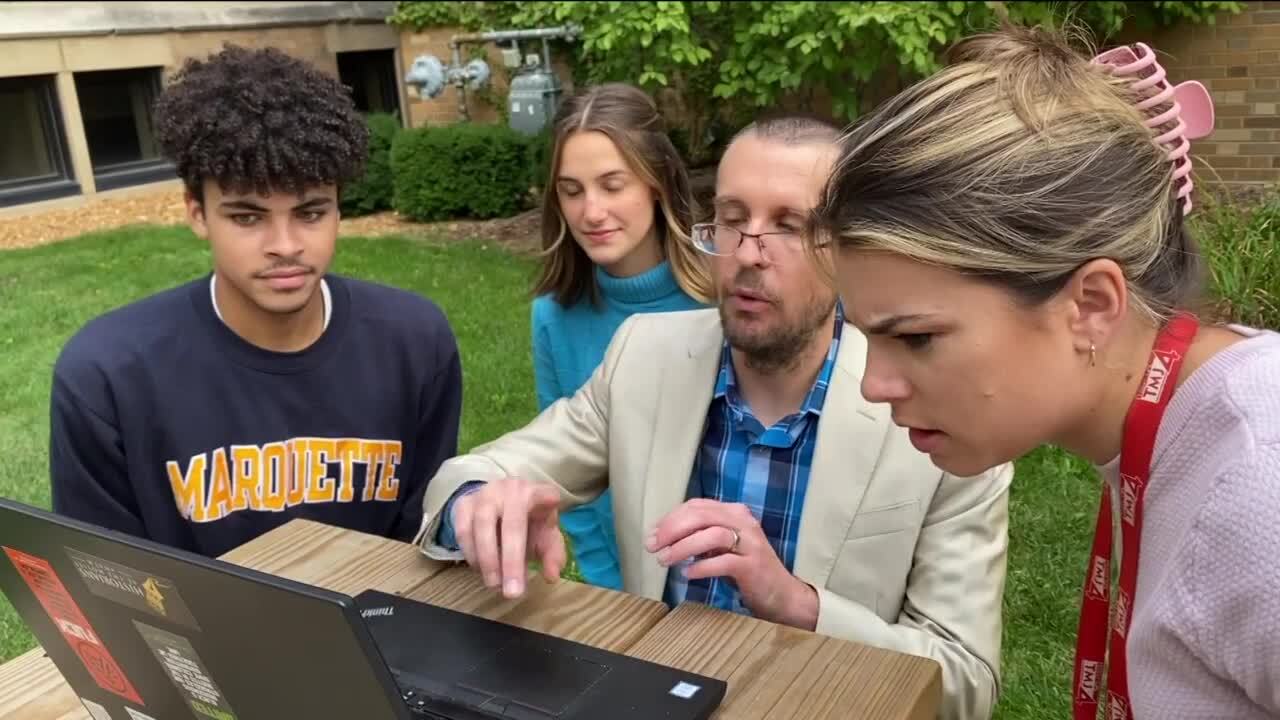MILWAUKEE — A team of Marquette University students and faculty are creating an interactive map to showcase the Indigenous history of Milwaukee's landmarks.
Clare Camblin is a Marquette junior and she's proud of her Indigenous heritage. She joined the team working on the map.
"I am part of the Osage Nation Eagle Clan," Camblin said.
Associate Prof. Bryan Rindfleisch started the project.
"What we do is we take all these various Milwaukee landmarks, like the Art Museum, Juneau Park, the Solomon Juneau statue, the fest grounds, Milwaukee ball park," Rindfleisch said. "And basically reveal the Indigenous roots of these places, and talk about the Indigenous nature of these sites."

Some of the other sites include the Indian Community School, McKinley Coast Guard Station, the MPS First Nation Studies Program, Lake Park Indian Mounds, and the Milwaukee River.
The map will soon be a website where you will see pictures, listen to interviews and read notes about each site. Rindfleisch says the goal is to catalog more than 100 places.
"I want you to see everywhere that you either live or where you walk, or especially on this campus, our students can see all the ways in which Indigenous communities are plugged into this place," Rindfleisch said.
According to the 2020 Census, more than 7,500 American Indian people live in Milwaukee County. Rindfleisch said Milwaukee is home to one of the largest populations of American Indian people in the Midwest.
"We're talking about not just Menominee, Ho-Chunk and Potawatomi Peoples, we're talking about Lakota, Dakota Peoples from the Dakotas. We're talking about Shawnee Peoples from Oklahoma. We're talking about the Navajo Peoples from the Southwest. That's a unique thing about a city like this," Rindfleisch said.
Rindfleisch stressed how important it is for people to learn about Indigenous heritage—past, present and future.
"Raising awareness, at the same time, just telling people, if you just look at the ground you're walking upon," Rindfleisch said. "These are not just Menominee, Ho-Chunk and Potawatomi lands, but the bones of their ancestors are here in the lands that you’re walking. And basically just getting Milwaukee to own that," Rindfleisch said.
"It just kind of blows my mind that so many things can be built over Native grounds and nobody knows about it," Camblin said.
Cameron Fronczak is a Marquette student from California. He says learning about American Indian history gave him a better understanding of where he lives. He hopes others will feel the same.
"It just made me feel more connected to my town, made me feel more connected to my area and my state in general," Fronczak said.




